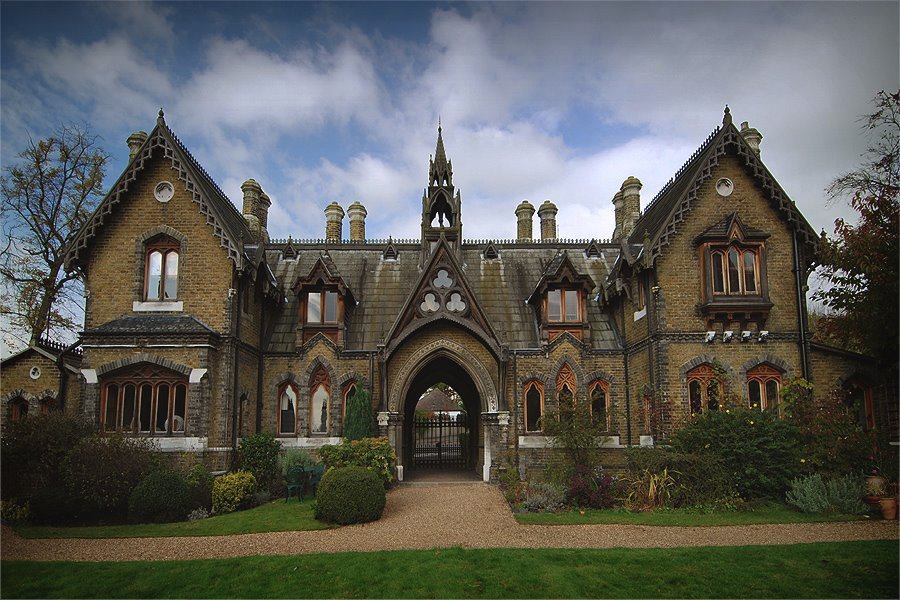#5169. Symmetrical Neo-Gothic façade of the Victorian era with central arch and decorative gables
Before me stands an outstanding example of late Victorian Gothic architecture, likely dating from the 1860s-1880s. This symmetrical brick building demonstrates characteristic features of the Neo-Gothic revival with distinct influences of the Gothic Revival style.
The façade of the building is distinguished by impeccable symmetry with two projecting wings crowned by pointed gables with decorative elements. The central part is adorned with an expressive pointed arch that serves as the main entrance and creates the axis of symmetry for the entire composition. Above the central arch rises an elegant turret with a spire, emphasizing the verticality of the composition.
The architect masterfully worked with details: windows decorated with wooden frames featuring characteristic Gothic motifs, yellow-toned brickwork contrasting with the dark roofing and light finishing elements. Particular attention is drawn to the decorative chimneys, round rose windows on the gables, and carefully crafted carved decorations above the windows and entrance arch.
The building is organically integrated into the landscape, framed by a well-maintained garden with neat shrubs and a gravel path, which emphasizes its elegance and status, likely as a former manor house or administrative building, possibly built for ecclesiastical purposes.
